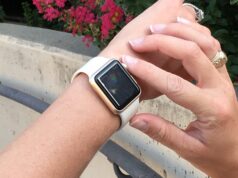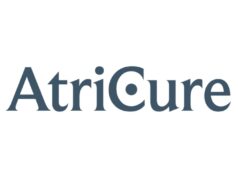
Defibrillators (ICDs, implantable cardioverter-defibrillators) are introduced surgically under the skin and chest muscles of at-risk patients with cardiac rhythm disturbances to control life-threatening ventricular tachycardia. Without the protection offered by such devices, many at-risk patients would suffer sudden cardiac death following recurrent ventricular tachycardia.
Even though the vast majority of cardiac arrhythmia patients implanted with ICDs are over 65 years old, the number of young ICD patients is rising steadily. However, diseases such as structural anomalies or genetic disorders of the cardiac conduction system are not necessarily contraindications for sports and exercise. For many people with these diseases, regular exercise and participation in organised sports lead to a better quality of life; some had even participated in athletic competitions for many years before their disease was diagnosed. In these cases, the implantation of an ICD then provided them with additional protection.
The seemingly simple question, “Is it safe to play sports with an implanted defibrillator?”, is difficult to answer. Physicians have long believed they were acting with due caution by upholding a general ban on sports for these patients, but new evidence has come to light that calls the rationale behind this prohibition into question. Experts are now beginning to allow ICD patients themselves to decide whether to take part in sports or engage in regular exercise. Based on recent studies and past experience, physicians are now able to determine the risk of young ICD patients experiencing ventricular tachycardia with greater precision. Consequently, a blanket prohibition against young ICD patients engaging in sports no longer accords with current knowledge. The initial data to challenge the ban on sports for young ICD patients comes from controlled clinical studies in which ICD patients who engaged in sports were no more impaired than those who did not.
At the 80th annual conference of the German Cardiac Society (GCS) in Mannheim, Karin Nentwich from Bad Neustadt, Germany, took up the question of when and what sports young ICD patients can safely engage in. She spoke at an event held by the EPIC Alliance, a global network of female research electrophysiologists that is supported by the Berlin-based medical technology company Biotronik. This year, the event was held in conjunction with the International Association of Female Interventional Cardiologists (EAPCJ Women).
In Karin Nentwich’s opinion, the current guidelines regarding young ICD patients’ ability to take part in sports require further scrutiny. The current therapy guidelines of both the European and the American cardiology societies prohibit people with ICDs and those with a normal pacemaker from engaging in any kind of competitive sport more strenuous than golf or bowling (permitted “class IA sports”). These recommendations were taken from the Bethesda Conference in 2005 (JACC, 2005) and the ESC (European Society of Cardiology) in 2005 (EHJ, 2005). Under the existing guidelines, risks that must be avoided include injuries from sports involving frequent physical contact, which could damage the ICD system and increase the frequency of arrhythmia. Furthermore, there is the potential risk of the ICD being unable to control ventricular arrhythmia due to metabolic changes resulting from extreme physical stress, therefore rendering shock therapy ineffective.
New research has shown, however, that many young patients with an ICD can engage in sports, and that the statistical risk of ventricular tachycardia is only elevated for two rare diseases and for the very young (< 20 years old). As a result, some studies have already posited that “the risks of ventricular tachycardia may be lower than previously thought.” Studies are now providing a more accurate picture of the possible risks, and their potential effect on necessary rescue shocks from implanted ICDs associated with different types of sports.
For physicians, it is important to discuss with their ICD patient whether they intend to engage in occasional exercise, if they are planning a moderate, non-systematic exercise programme, if they are interested in systematically preparing for athletic competitions, or even whether sports and exercise are actually an essential part of the patient’s quality of life. In light of new study results, Karin Nentwich demonstrated that the ICD patients examined do not actually engage in the types of sports recommended in the existing guidelines. She also noted that audacious-sounding sports such as rugby or skydiving were in fact less likely to bring about ICD shocks than were bicycling, jogging or basketball.
In her presentation at the German Cardiac Society’s annual conference, Karin Nentwich concluded that implantable defibrillators are not contraindicated for young people engaging in physical education, sports and-within limits–competitive sports. While participating in some sports can pose an increased risk of arrhythmia, this must be weighed against the health benefits these patients derive from exercise. In her view, the risk to ICD patients can be minimised by using an optimal implantation technique, individualised programming of the device, advance testing under stress and regular follow-up observations of the patient, especially by continuous remote follow-up using remote monitoring technologies like Biotronik Home Monitoring service. This technology provides the attending physician relevant information on a daily basis on the medical condition of the patient or the device status and, if necessary, permits early intervention and adjustment to ensure the therapy conforms to requirements.
“Medical technology has advanced to the point that we must begin to question a wide range of prohibitions. Telemedical remote follow-up for patients using Biotronik Home Monitoring allows patients to live their lives more flexibly and provides increased safety. With the information that we obtain via Home Monitoring, we can provide therapy tailored to the individual patient’s needs, and make individualised recommendations regarding sports activities,” explains Nentwich.









